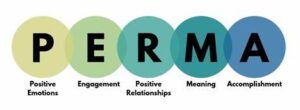How Gratitude Can Improve Your Well-Being and Happiness
Gratitude is one of the most powerful positive emotions that can enhance your well-being and happiness. But what is gratitude and how can you practice it in your daily life? In this article, we will explore the definitions, benefits, types, and challenges of gratitude, and share some research-based strategies to help you cultivate a grateful mindset.
What is gratitude and why does it matter?
Gratitude is the appreciation of what is valuable and meaningful to oneself. It is a recognition of the goodness in one’s life and the sources of that goodness, whether they are internal or external, personal or universal. Gratitude is not just a feeling, but also an attitude and a practice that can be cultivated and expressed in various ways.
Gratitude matters because it can improve your physical, mental, and social health. According to the Center for the Advancement of Well-Being, grateful people tend to be happier, healthier, more resilient, more prosocial, and less narcissistic. More than 50 true experimental studies show that various interventions that increase gratitude actually increase subjective well-being.
Some of the benefits of gratitude for your physical health include:
- Increased happiness and reduced stress, which can lower blood pressure, improve immune function, and prevent chronic diseases.
- Better sleep quality and duration, which can enhance your energy, mood, and cognitive performance.
- More exercise and healthy dietary behaviors, which can prevent obesity, diabetes, and cardiovascular problems.
Some of the benefits of gratitude for your mental health include:
- Enhanced positive emotions and reduced negative emotions, such as joy, gratitude, love, optimism, satisfaction, hope, etc.
- Increased resilience and coping skills, which can help you overcome challenges, trauma, and adversity.
- Greater self-esteem and self-worth, which can boost your confidence and motivation.
Some of the benefits of gratitude for your social health include:
- Improved relationships and social support, which can increase your sense of belonging, trust, intimacy, and satisfaction.
- More prosocial behaviors and less antisocial behaviors, such as kindness, generosity, compassion, empathy, cooperation, forgiveness, etc.
- Reduced loneliness and isolation, which can protect you from depression and anxiety.
As you can see, gratitude can have a profound impact on your well-being and happiness. But how can you practice gratitude in your daily life? Let’s look at some of the different types of gratitude and how they can be applied.
What are the different types of gratitude and how can they be practiced?
Gratitude can be classified into three main types: situational gratitude , dispositional gratitude , and existential gratitude . Each type has its own characteristics and benefits.
Situational gratitude
Situational gratitude is the appreciation of specific events or circumstances that happen in your life. It is a response to something good that you receive or experience from others or from the environment. For example,
- You are grateful for receiving a gift from a friend.
- You are grateful for having a sunny day after a week of rain.
- You are grateful for finding a parking spot near your destination.
Situational gratitude can help you notice and savor the positive aspects of your life. It can also increase your happiness by enhancing your positive emotions and reducing your negative emotions. Moreover, it can strengthen your relationships by expressing your appreciation to others who have contributed to your well-being.
Some ways to practice situational gratitude are:
- Keep a gratitude journal. Write down three things that you are grateful for every day. Try to be specific and detailed about what happened and how it made you feel. You can also include photos or drawings to make it more vivid.
- Write thank-you notes. Send a handwritten or digital note to someone who has done something nice for you. Express your gratitude sincerely and specifically. You can also include a small gift or gesture to show your appreciation.
- Express gratitude verbally or non-verbally. Say “thank you” to someone who has helped you or complimented you. Smile or hug someone who has made you happy. Give a high-five or a thumbs-up to someone who has done a good job.
Research shows that these practices can increase your happiness, life satisfaction, optimism, positive affect, self-esteem ,prosociality, etc.
Dispositional gratitude
Dispositional gratitude is the appreciation of one’s life as a whole. It is a personality trait or habit that reflects a general tendency to be grateful regardless of the situation. For example,
- You are grateful for being alive and healthy.
- You are grateful for having supportive family and friends.
- You are grateful for having opportunities to learn and grow.
Dispositional gratitude can help you develop a positive outlook on life. It can also increase your happiness by enhancing your positive emotions and reducing your negative emotions. Moreover, it can improve your resilience and coping skills by helping you find meaning and purpose in your life.
Some ways to practice dispositional gratitude are:
- Reflect on your values. Think about what matters most to you in life and why. Write down your core values and how they guide your actions and decisions. You can also create a vision board or a collage that represents your values visually.
- Explore your passions and interests. Think about what you enjoy doing and what makes you feel alive. Write down your hobbies, skills, talents, and goals. You can also join a club or a community that shares your passions and interests.
- Contribute to a greater good. Think about how you can make a positive difference in the world and why. Write down your causes, missions, or visions. You can also volunteer or donate to a charity or an organization that aligns with your values.
Research shows that these practices can increase your happiness, life satisfaction, meaning, purpose, self-actualization, etc.
Existential gratitude
Existential gratitude is the appreciation of life itself. It is a spiritual or philosophical perspective that recognizes the gift and mystery of existence. For example,
- You are grateful for the beauty and wonder of nature.
- You are grateful for the miracle and mystery of consciousness.
- You are grateful for the connection and transcendence of spirit.
Existential gratitude can help you cultivate a sense of awe and wonder. It can also increase your happiness by enhancing your positive emotions and reducing your negative emotions. Moreover, it can enrich your spirituality and well-being by helping you connect with something greater than yourself.
Some ways to practice existential gratitude are:
- Meditate or pray. Find a quiet place and time to focus on your breath, thoughts, feelings, sensations, or beliefs. You can also use a mantra, a scripture, a poem, or a song to guide your meditation or prayer.
- Spend time in nature. Go for a walk, hike, bike, or swim in a natural setting. Observe the colors, shapes, sounds, smells, and textures of the environment. You can also take photos or collect souvenirs from nature.
- Create or appreciate art. Draw, paint, sculpt, write, sing, play, or dance something that expresses your gratitude for life. You can also visit a museum, a gallery, a concert, or a theater to appreciate the art of others.
Research suggests that these practices can increase happiness, positive affect, awe, wonder, spirituality, etc.
What are the challenges and barriers to practicing gratitude and how to overcome them?
Gratitude is not always easy to practice. Sometimes we face challenges and barriers that prevent us from feeling or expressing gratitude. Some of the common obstacles to gratitude are:
- Negativity bias: This is the tendency to pay more attention to negative information than positive information. It is a survival mechanism that helps us avoid danger and harm. However, it can also make us overlook or forget the good things in our lives.
- Entitlement: This is the belief that we deserve something without earning it or appreciating it. It can be a result of social comparison, unrealistic expectations, or narcissism. It can also make us take things for granted or feel dissatisfied with what we have.
- Comparison: This is the tendency to measure ourselves against others based on their achievements, possessions, appearance, etc. It is a way of evaluating our self-worth and social status. However, it can also make us feel envious, inferior, or superior to others.
These challenges can be overcome by using some of the following strategies:
- Reframing negative situations: This is the process of changing the way we think about or interpret a situation that causes us distress or discomfort. It is a way of finding alternative perspectives that are more positive or realistic. For example,
- Instead of thinking “I hate my job”, you can think “I’m grateful for having a job that pays my bills”.
- Instead of thinking “I’m stuck in traffic”, you can think “I’m grateful for having some time to listen to music or podcasts”.
- Instead of thinking “I’m sick”, you can think “I’m grateful for having access to health care and medicine”.
Before we continue with the list of strategies, this is an issue that needs to be addressed. I get it. Reframing negative thoughts and emotions can seem like denial or whitewashing if not done carefully. Here are a few perspectives to consider:
- Reframing is not about ignoring real problems or rationalizing toxic behaviors. It involves finding realistic, constructive ways of viewing a situation to cope with it better.
- Reframing shifts our mindset slightly – from victim to survivor, from helpless to hopeful. It helps us regain some sense of control and optimism, which is key for mental health.
- All perception involves some interpretation. Reframing allows us to intentionally view things in a more helpful way, while still acknowledging the reality.
- Reframing builds resilience and helps us avoid spiraling into depression/anxiety. We still feel sadness/anger but don’t get consumed by it.
- Reframing is a skill – it takes practice to find positive reframes that click for you authentically. Not all attempts may work.
- Reframing works best combined with actively problem-solving. We avoid false positivity and take constructive actions.
The goal is balance – acknowledging challenges while maintaining hope and motivation to endure. With practice, reframing can help us become more adaptable. But it should not replace emotional processing or practical problem-solving. Reframing negative situations can help you reduce your stress , anxiety , depression , etc.
Back to our list of strategies to overcome barriers to gratitude:
- Cultivating humility: This is the quality of being modest and respectful of others. It is a way of acknowledging our limitations, weaknesses, mistakes, and dependence on others. For example,
- Instead of thinking “I’m better than everyone else”, you can think “I’m grateful for everyone who has helped me along the way”.
- Instead of thinking “I don’t need anyone’s help”, you can think “I’m grateful for being.:
- I’m grateful for being able to ask for and receive help when I need it”.
- Instead of thinking “I never make mistakes”, you can think “I’m grateful for learning from my mistakes and improving myself”.
Cultivating humility can help you increase your gratitude , empathy , compassion , etc.
- Finding silver linings: This is the practice of looking for the positive aspects or outcomes of a negative or difficult situation. It is a way of finding hope and optimism in the face of adversity. For example,
- Instead of thinking “I lost my job”, you can think “I’m grateful for having an opportunity to find a better job or pursue a different career”.
- Instead of thinking “I broke up with my partner”, you can think “I’m grateful for having a chance to grow as a person and meet someone more compatible”.
- Instead of thinking “I failed an exam”, you can think “I’m grateful for having feedback and guidance on how to improve my performance”.
Finding silver linings can help you increase your happiness, resilience, coping skills, etc.
Make Gratitude Your Habit
Gratitude is a powerful positive emotion that can improve your well-being and happiness. It can also enhance your physical, mental, and social health. Gratitude can be practiced in different ways, such as situational gratitude, dispositional gratitude, and existential gratitude. However, gratitude can also be challenged by obstacles, such as negativity bias, entitlement, and comparison. These challenges can be overcome by using strategies, such as reframing negative situations, cultivating humility, and finding silver linings.
We hope this article has inspired you to practice gratitude in your daily life and share your experiences in the comments section. We are grateful for your attention and feedback.
Great Things Never Came From Comfort Zones
Say goodbye to that rut you’ve been stuck in and hello to a brighter future with enLiven Wellness Life Coaching team. Get started today by scheduling a consultation with our team.
Related Resources
enLiven Wellness Coaching, llc is a participant in the Amazon Services LLC Associates Program, an affiliate advertising program designed to provide a means for website owners to earn advertising fees by advertising and linking to amazon.com, audible.com, and any other website that may be affiliated with Amazon Service LLC Associates Program. As an Amazon Associate [I or we] earn from qualifying purchases.
Additional Articles in this Series
This article is part of a series of articles on the five pillars of well-being. The pillars are positive emotion, engagement, relationship, meaning, and accomplishment.

















